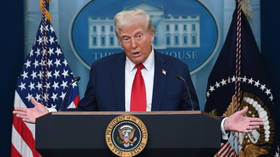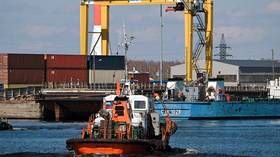Energy News Beat
[[{“value”:”
BERLIN/POTSDAM – The lack of spring in Christian Lindner’s step heralds the murky electoral prospects of Germany’s liberal Free Democratic Party (FDP).
Just a few months ago, the FDP leader was Germany’s finance minister, revelling in the role as Europe’s primary austerity advocate, who had the French begging for mercy just by mentioning that he was worried about their budget deficit.
Yet, since the FDP exited Olaf Scholz’s three-party coalition government, Lindner has been relegated to the opposition benches, fighting for his party’s political survival.
Framed as the troublemaker in an unpopular coalition, the FDP is mostly polling below Germany’s electoral threshold of 5%. If it stays there, Germany’s long-standing kingmaker party would fail to enter parliament in the upcoming national elections for only the second time since 1949.
“Those who want to preserve the potential of a liberal party in Germany’s parliament must come to the flag now,” Lindner pleaded on Sunday at the FDP party conference in Potsdam.
His party is not the only influential actor caught in limbo, struggling to stay relevant. The list of those hovering around 5% includes the controversial left-populist Alliance Sahra Wagenknecht (BSW) and Die Linke, Germany’s main far-left party.
Who makes it to the cut remains unpredictable until before election day, given that the decisions could come down to 1% of the vote in each case and a special constitutional clause.
Should they pass the threshold, they would significantly impact the formation of Germany’s future government by shifting majorities.
One poll, published by pollster Forsa two weeks ago, predicted that all three smaller parties would miss the mark, reducing the number of groups in the Bundestag from seven to four – the lowest value since 2017.
That would be a gift for the frontrunners, the Christian Democrats (CDU/CSU), who are polling at around 30%. That vote share translates into some 37% of the seats in parliament when shared among fewer parties, allowing the CDU/CSU to obtain a government majority with just one additional coalition partner.
Just a few days before, another pollster, YouGov, saw both FDP (5%) and BSW (7%) above the threshold, however.
If Die Linke (4%) also jumps the hurdle, the CDU/CSU’s seat share would shrink to 30% and require a three-party coalition, which many dread after Scholz’s experiment ended in infighting.
CDU’s lead candidate, Friedrich Merz, has repeatedly stressed that only an action-oriented government that isn’t constantly fighting can turn around Germany’s ailing economy.
Wagenknecht’s woes
The stakes are high and the means desperate.
Die Linke, which emerged from the ruling party of socialist East Germany, abandoned the 5% race early on and instead launched ‘Mission Silver Hair’ – a plan to exploit a loophole in Germany’s electoral system.
Germans cast two votes in the elections, one for an MP in their local constituency and one for a party. The latter determines how many seats all parties that reach 5% get. But there is an exception: if a party that falls below 5% wins at least three constituencies, it still gets the share of seats it would get if there was no threshold.
Die Linke is not only close to winning three constituencies, for which it fielded three popular, retirement-age party grandees. Ironically, it is also enjoying momentum that could see it reach 5% in the final ballot.
It benefits from the centrist shift of the Green Party, a direct competitor, noted Jan-Philipp Thomeczek, a political scientist at the University of Potsdam.
That is also a blow to Sahra Wagenknecht, the shooting star of German politics, who had abandoned Die Linke last year to launch BSW – a socially conservative left-wing party that strikes a conciliatory tone on Russia.
Intermittently, her new party was flying high in the polls, riding a wave of concerns over an escalation of Russia’s war in Ukraine. Some of that support, however, may have been distorted by early successes in regional elections and has waned as the war has not featured prominently in the campaign, said Thomeczek, adding that the current race was too close to call.
It could eventually become a fight to the death.
“At the national level, it will be difficult for both parties to stay above 5% at the same time because they have a larger overlap in potential voters,” Thomeczek said.
To motivate her supporters, Wagenknecht has tied the election to her political future. “Anyone who isn’t in the Bundestag is no longer relevant in German politics,” she said.
Milei with hedge clippers
Meanwhile, Lindner has embraced his new pariah status, playing to an image as the coalition’s fiscally hawkish paymaster and to revelations that his party secretly plotted the breakdown of Scholz’s dysfunctional coalition.
He has notably cited tech billionaire Elon Musk and Argentinian President Javier Milei as role models for Germany, who are both controversially cutting back on state spending and institutions. After backlash, he backpedalled and recommended using metaphorical hedge clippers for slashing regulation instead of Milei’s infamous chainsaw.
In Potsdam, Lindner promised to save Germany’s ailing economy with similarly “disruptive ideas”, slamming “new government spending, new subsidies, new constraints, new social standards, new social programmes.”
FDP officials put on a confident front, with many briefing that 5% is possible. Unlike in the CDU/CSU camp, the prospect of a three-party coalition was welcomed, as it would potentially allow the FDP to join a government with the CDU/CSU and the Social Democrats (SPD).
Europe’s profligate spenders should not cheer too soon. Paymaster Lindner might come back.
[MM]
“}]]
The post The battle for 5% that will shape Germany’s next government appeared first on Energy News Beat.


















